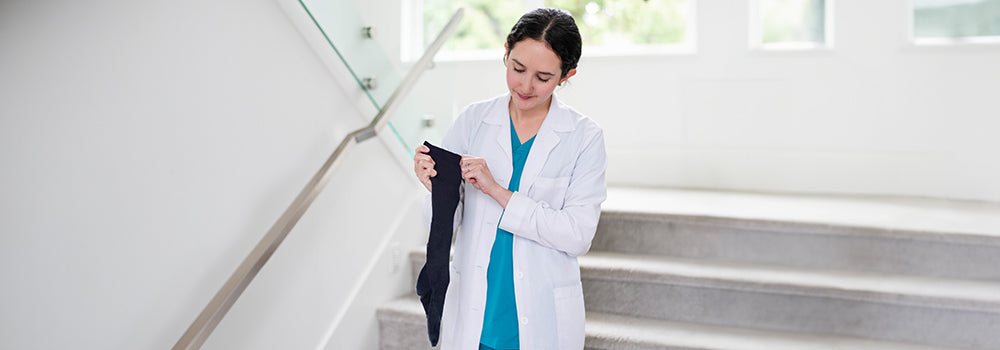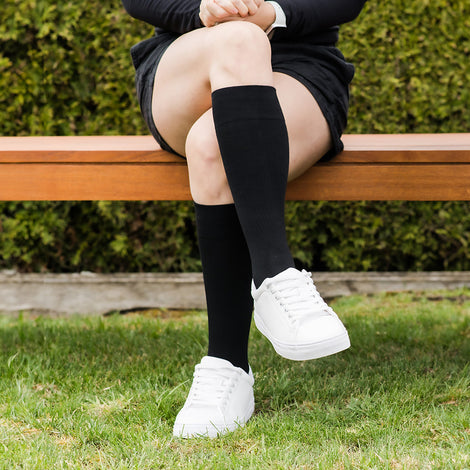When Should Compression Socks Be Worn?

Compression socks are a fantastic tool for improving circulation, reducing swelling, and providing support for tired legs. But a common question is, "When should compression socks be worn?" Understanding the best times and situations to wear compression socks can help you get the most out of their benefits. Let’s explore the optimal times for wearing compression socks and why they can make a significant difference in your daily life.
Best Time to Wear Compression Socks
The best time to wear compression socks is generally during the day when you are most active. Wearing compression socks in the morning can help prevent swelling and discomfort that might develop throughout the day. It’s particularly beneficial to put them on before any activity that involves prolonged sitting or standing.

Compression Socks for Daily Use
Daily use of compression socks can be incredibly beneficial for those who experience leg fatigue or mild swelling. By wearing compression socks during your daily activities, you can support better blood flow, reduce the risk of varicose veins, and alleviate discomfort from standing or sitting for long periods.
Benefits of Wearing Compression Socks
Wearing compression socks regularly can offer a range of benefits:
- Improved Circulation: Helps prevent blood from pooling in the legs, reducing the risk of blood clots.
- Reduced Swelling: Minimizes fluid buildup in the legs, ankles, and feet.
- Relief from Pain and Discomfort: Alleviates symptoms of conditions like varicose veins and chronic venous insufficiency.
Compression Socks for Travel
Traveling often involves long periods of sitting, whether you’re on a plane, train, or car. Compression socks for travel are essential to prevent swelling and deep vein thrombosis (DVT). Wearing compression socks during flights or long drives can keep your legs comfortable and reduce the risk of circulation-related issues.
Compression Socks for Work
For those who stand or sit for extended periods at work, compression socks can be a game-changer. Healthcare professionals, retail workers, office employees, and others can benefit from the support and comfort provided by compression socks. By wearing them at work, you can prevent leg fatigue and maintain better leg health.
Wearing Compression Socks During Exercise
Compression socks are also beneficial during exercise. They can improve blood flow to your muscles, enhancing performance and reducing the risk of cramps and fatigue. Post-exercise, compression socks can aid in quicker recovery by reducing muscle soreness and inflammation.

Compression Socks for Swelling
If you suffer from swelling in your legs, ankles, or feet, compression socks can be a great solution. Conditions like edema or lymphedema can cause uncomfortable swelling, and wearing compression socks can help manage these symptoms effectively.
Who Should Wear Compression Socks?
Compression socks are beneficial for a wide range of people:
- Travelers: To prevent swelling and DVT during long trips.
- Workers: Especially those who stand or sit for long periods.
- Athletes: For improved performance and recovery.
- Pregnant Women: To reduce swelling and improve circulation.
- Seniors: To support better circulation and prevent leg issues.
- People with Medical Conditions: Such as varicose veins, diabetes, or chronic venous insufficiency.
How Long to Wear Compression Socks
The duration you should wear compression socks depends on your individual needs and activities. For daily use, wearing them during waking hours is sufficient. During travel or long periods of inactivity, it’s beneficial to wear them for the entire duration. Always consult with a healthcare provider for personalized advice.
Conclusion: When to Wear Compression Socks
Compression socks are versatile and beneficial for various situations. Whether you’re at work, traveling, exercising, or simply going about your daily routine, wearing compression socks can enhance your comfort and support your leg health. Dr. Johnny's Compression Socks are designed to provide optimal support and comfort, making them an excellent choice for everyday wear. Remember to consult with a healthcare professional to determine the best usage for your specific needs.
SHARE:







